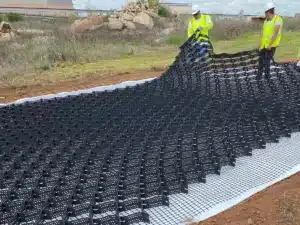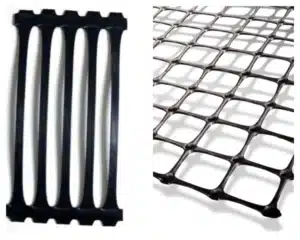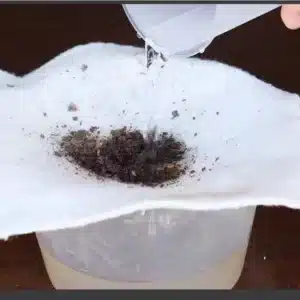Floods move sediment. Dredging leaves slurry. Stockpiles spread risk. You need a clean, simple, and scalable way to contain and dewater.
A geotube is a large geotextile tube that you fill with slurry and polymers. Water drains through the fabric. Solids stay inside. You build temporary berms, reclaim land, and store dredged material with fast, low-equipment logistics.

You may be a buyer, a project procurement lead, or a wholesaler. As a manufacturer, I explain what is a geotube, what are geotubes used for, what are geotubes filled with, and how does a geotube work. I also share selection, installation, and QC checklists so your team can use them with confidence.
What is a geotube?
Slurry is hard to handle. Tanks are expensive. Land is limited. You want a simple container that drains fast and stacks well.
A geotube is a high-strength, permeable geotextile tube. You pump slurry into the tube. The fabric lets water escape while retaining solids. The tube forms a long, stable prism that you can leave in place or cut open to remove dried solids.
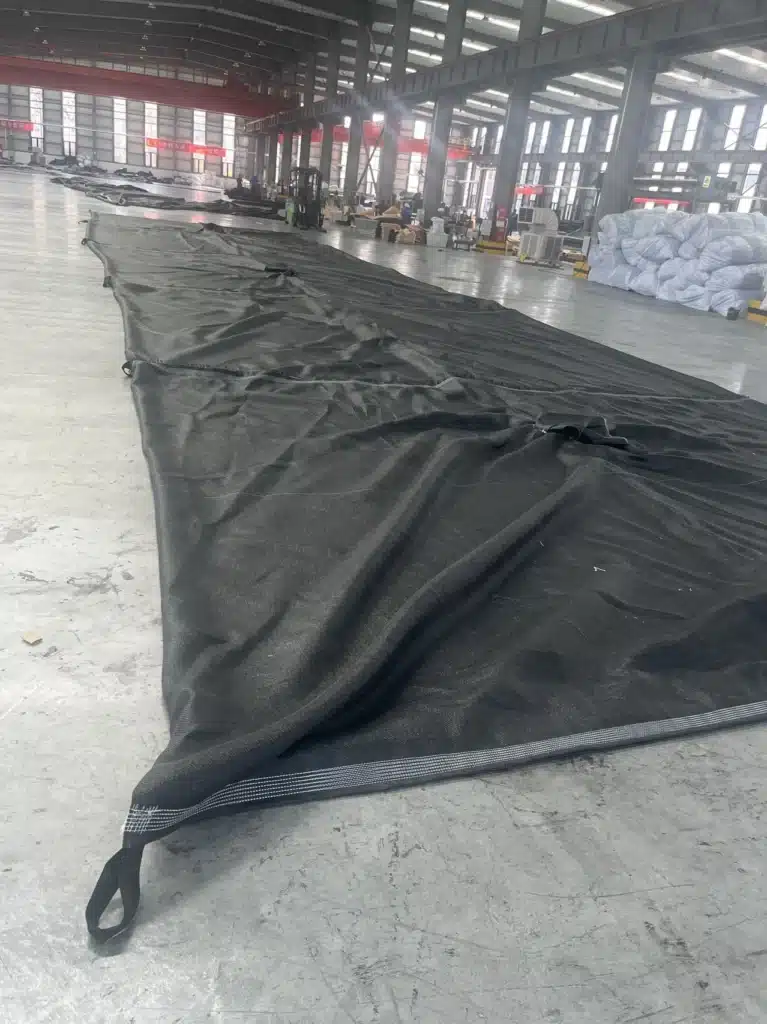
Dive deeper
Core components and geometry
A geotube uses woven or composite geotextiles with high tensile strength and controlled pore size. The circumference controls final height at a given fill factor. The seam joins the fabric edges and must match tube strength. The filling ports (inlets) spread flow and reduce local stress. You place tubes on a prepared pad with drainage paths. You often lay underdrains or a sacrificial geotextile beneath to protect the subgrade and to improve return-water quality.
Fabric properties you will specify
- Tensile strength and elongation: The tube must resist hoop stress during filling and stacking.
- Pore size / apparent opening size (AOS): Small enough to retain particles with polymer floc, yet open enough to drain.
- Permittivity / permeability: Governs drainage rate under low head.
- Seam efficiency: The seam must carry a high percentage of fabric strength.
- UV stability / abrasion resistance: Important for exposed storage and staging areas.
Basic size logic
| Parameter | Typical choice | Why it matters |
|---|---|---|
| Circumference (m) | 10–22 | Controls final height at 60–85% fill |
| Length (m) | 10–60+ | Matches site geometry and pump logistics |
| Fabric AOS | 0.2–0.6 mm (indicative) | Balances retention and flow with polymer use |
| Tensile (kN/m) | Project-specific | Set by fill height, stacking, and safety |
What is a geotube in practice? It is a flexible, engineered container that turns thin slurry into dense, handleable solids with minimal fixed assets.
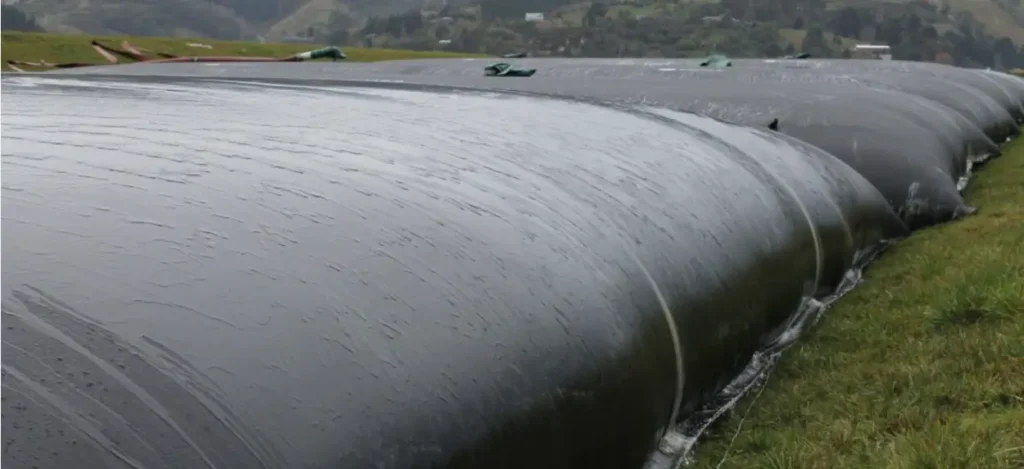
What are geotubes used for?
Waste ponds fill. Dredging windows are tight. Shorelines erode. You need a fast, modular tool that scales from one truckload to a full shoreline.
Geotubes are used for dredged material containment, sludge dewatering, mine tailings management, storm cleanup, shoreline protection, temporary berms, breakwaters, and even for low-height retaining berms in land reclamation.
Dive deeper
Sector-by-sector overview
| Sector | Use case | Benefit | Notes |
|---|---|---|---|
| Dredging & Ports | Maintenance dredge spoils | Fast staging and water return | Fit length to barge cycles |
| Municipal | WWTP sludge dewatering | Lower haul cost, lower odor | Pair with polymer feed skid |
| Mining | Tailings thickening & staging | Buffer storage, selective reclaim | Check pH and reagent effects |
| Flood & Storm | Silt and debris cleanup | Mobile, quick to deploy | Use smaller tubes for access |
| Coastal | Shoreline protection & breakwaters | Wave attenuation, sand trapping | Anchor and scour apron required |
| Construction | Temporary berms & containment | Rapid barriers with site soils | Verify bearing and settlement |
Why buyers pick geotubes
- Speed: You deploy with pumps and simple lifting gear.
- Scalability: You add tubes as volumes change.
- Footprint: You stack or place in rows to fit the site.
- Cost: You avoid large capital tanks and complex mechanical presses.
- Compliance: You capture solids and improve return-water clarity with proper polymers.
You can use geotubes as temporary process units or as part of the final works. Your choice depends on space, time, and end use of the solids.
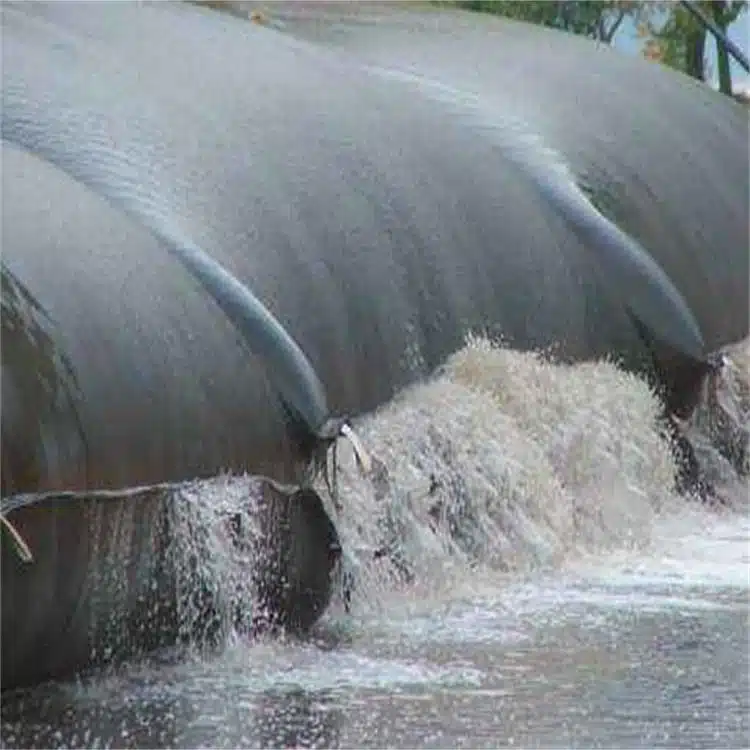
What are geotubes filled with?
Not every slurry behaves the same. Sand drains fast. Fine silt does not. Organics smell. You must match fill, polymer, and fabric.
Geotubes are filled with dredged sediment, municipal or industrial sludge, mine tailings, or site soils mixed with water. You often add polymers to floc fine particles, speed drainage, and improve solids capture.
Typical slurries and behavior
| Fill type | Behavior in tube | Polymer need | Notes |
|---|---|---|---|
| Sand-rich slurry | Drains quickly; high final density | Low | Watch scour at outlets |
| Silt/clay slurry | Slow drainage; risk of blinding | Medium–High | Dose control is critical |
| WWTP biosolids | Odor; compressible cake | High | Cover and odor plan |
| Mine tailings | Chemistry varies | Medium | Check pH, salts, reagents |
| Storm debris fines | Mixed sizes | Medium | Pre-screen trash |
Polymer strategy
A small, continuous dose of cationic or anionic polymer creates flocs that are big enough to hold inside the fabric while clean water escapes. You establish dose by jar tests or on-site pilot runs. You then use a make-down unit and in-line mixers to keep dosing stable. Overdose wastes money and can blind the fabric. Underdose slows drainage and loses fines to the return water.
Water return and handling
Place a collection ditch or sump on the down-gradient side. Return water can flow to a settling cell, bag house, or polishing filter as your permit requires. Keep head (water level within the tube) within the specified range to avoid over-stressing seams. Plan for rest cycles. After a fill cycle, you stop pumping and let the tube consolidate. You can refill in stages to build height safely.
The right fill plan uses realistic pump rates, polymer control, and rest cycles. Your crew sees faster drainage, cleaner return water, and denser cakes.
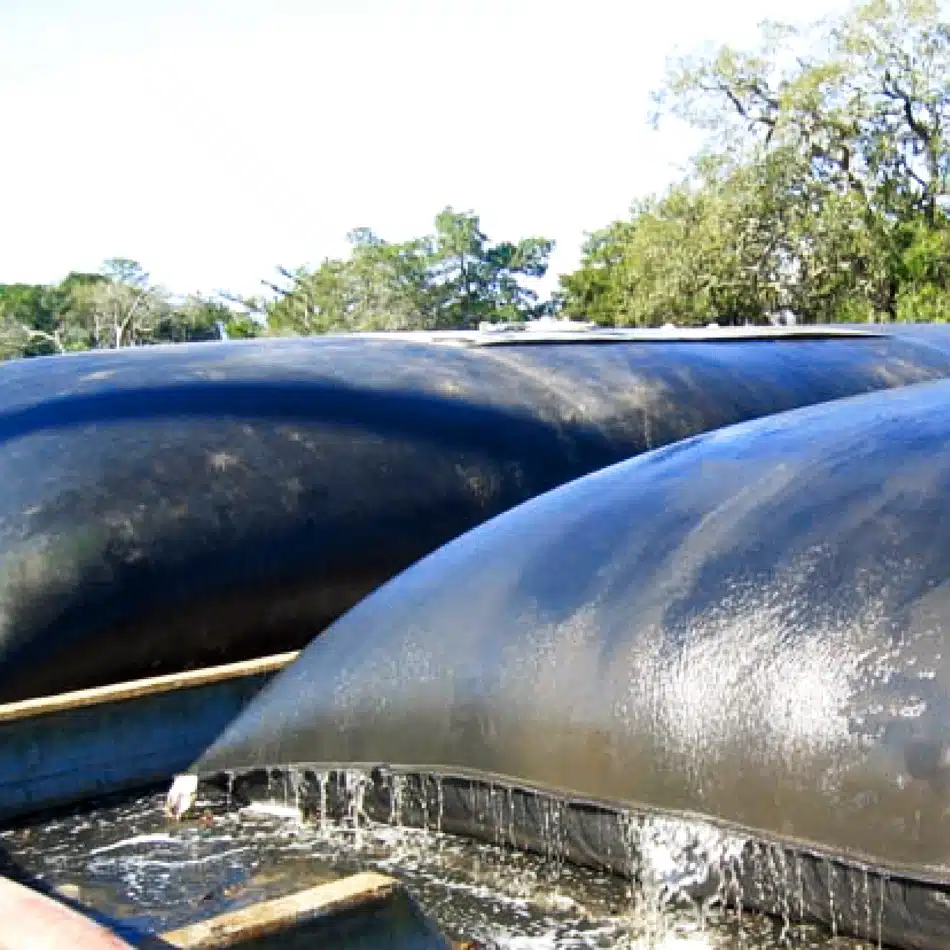
How does a geotube work?
You pump slurry in. Water flows out. Solids stay. That is the simple picture. The details decide success.
A geotube works by combining fabric filtration and gravity drainage. The geotextile retains flocculated solids while letting water pass. As water leaves, the cake consolidates under its own weight. The tube gains strength from hoop tension and the friction between the tube and the foundation.
Dive deeper
Mechanisms that matter
- Filtration and retention: The AOS and fabric structure set the cut-off. With polymer, fines agglomerate into larger flocs that the fabric holds.
- Drainage and permittivity: Water escapes through billions of micro-paths. A high permittivity increases early flow.
- Consolidation: As water leaves, the particle skeleton carries more load. Void ratio drops. Shear strength rises.
- Hoop tension: The tube acts like a soft tank. Circumference and fill level create hoop stress resisted by fabric and seam.
Foundation and stability
Good pads keep tubes stable and clean. Provide a level, free-draining base, often with a thin sand layer and a sacrificial geotextile. On soft ground, use a reinforcement geogrid or a working platform. Manage edge scour with toe protection. For coastal works, place a scour apron and anchor per design. For stacking, check bearing and spacing between rows to avoid overlap settlement.
Operation cycle
1) Fill to a target height (often 60–85% of theoretical).
2) Stop and rest to allow consolidation.
3) Repeat fill cycles until final height is reached.
4) Cap or leave to dry.
5) Cut open and remove solids if required, or leave the tube as a permanent berm.
Control fill pressure, polymer dose, and rest time. This control is the difference between a wet bag and a dense, stable prism.
How do I choose the right geotube?
Long catalogs slow you down. A short path helps: volume, particle size, polymer plan, site pad, and logistics. Then you lock fabric and size.
Choose circumference from target height and footprint. Choose fabric by AOS, tensile, and seam efficiency. Choose length by site geometry and pump cycle time. Bundle with a polymer make-down unit, underlayment, and fittings for one delivery.
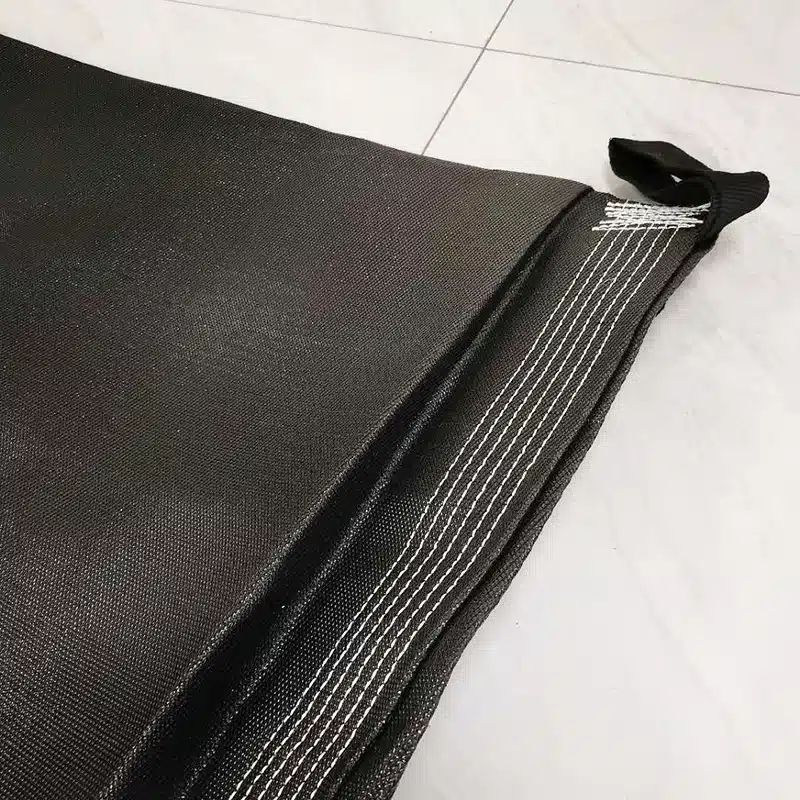
Dive deeper
Fast selection checklist
- Volume and schedule: Estimate daily and total slurry volumes. This sets tube count and fill cycles.
- Particle size and solids: Get a gradation or at least a sand/silt/clay split and % solids. This sets AOS and polymer need.
- Polymer plan: Run jar tests. Select polymer type, dose window, and make-down equipment.
- Pad and drainage: Design a level, free-draining pad, with collection ditch and sump. Add underlayment geotextile.
- Tube geometry: Pick circumference for final height; pick length to match site and pump duty.
- Seam strength: Verify seam efficiency is close to fabric strength.
- Stacking or single layer: If stacking, verify bearing and set row spacing.
- Return-water path: Confirm permits, sampling points, and polishing steps if needed.
Specification matrix (buyer view)
| Item | Minimum you should define | Typical range |
|---|---|---|
| Fabric tensile (kN/m) | Warp/fill, at break | Project-specific (e.g., 70–120) |
| Seam efficiency (%) | % of fabric tensile | ≥ 90% (project target) |
| AOS (mm) | Apparent opening size | 0.2–0.6 |
| Permittivity (s⁻¹) | Cross-plane flow rate | 0.5–1.5 |
| UV resistance | Strength retained after exposure | Per project duration |
| Tube circumference (m) | Height target / footprint | 10–22 |
| Inlet fittings | Size and type | 6″–12″ camlock or flange |
A clear spec lets suppliers quote apples-to-apples and protects your job from “near-spec” fabric.
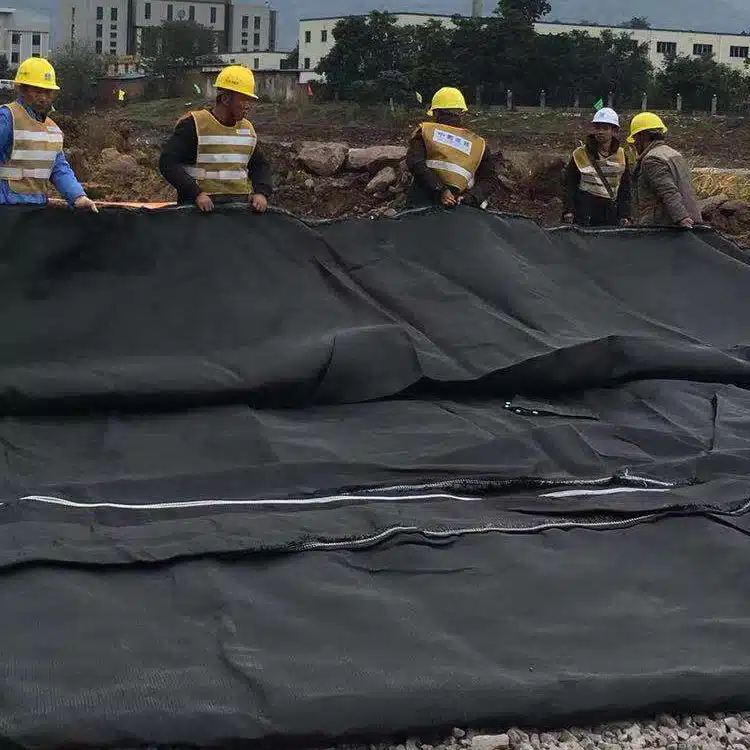
How do I install, fill, and stack geotubes?
Crews need a simple sequence. You need clean return water and dense cake. The right steps cut risk and time.
Install on a level pad with drains. Connect pump and polymer feed. Fill in controlled lifts. Rest between fills. Stack only after tubes gain stiffness. Sample return water. Keep records for acceptance.
Dive deeper
Field sequence you can hand to a foreman
- Pad prep: Grade to fall toward a sump. Place a sacrificial geotextile and, if needed, a thin sand layer for drainage.
- Layout: Roll out tubes per plan. Align inlets to feed lines. Anchor ends if wind is high.
- Connections: Fit camlocks or flanged inlets. Install flow meters and sample ports.
- Polymer system: Set make-down unit. Verify concentration and age. Calibrate feed pumps.
- Initial fill: Start at low rate. Watch for even swelling, seam behavior, and return-water clarity.
- Dosing control: Adjust polymer to maintain clear filtrate. Avoid over-dosing that blinds fabric.
- Cycle: Fill to target height. Stop and rest for consolidation. Repeat until final height.
- Stacking: If stacking, place timber or sand keys between rows. Wait until lower tubes reach required stiffness.
- Closure: Cap ports. Add cover if long exposure. Cut and remove solids only after target dryness.
QC and monitoring
- Return-water turbidity: Field turbidity meter or settleometer jars.
- Tube height: Staff gauge or laser.
- Polymer dose: Record setpoint and consumption.
- Pad condition: Inspect for erosion at discharge points.
- Weather: Pause filling in heavy rain or strong winds.
Safety and housekeeping
Set exclusion zones. Keep hoses tidy. Control odors with covers where needed. For coastal works, install scour aprons and anchors before waves pick up. For WWTP sites, follow confined-space and chemical handling rules.
Simple discipline turns geotubes into reliable, low-drama process units.
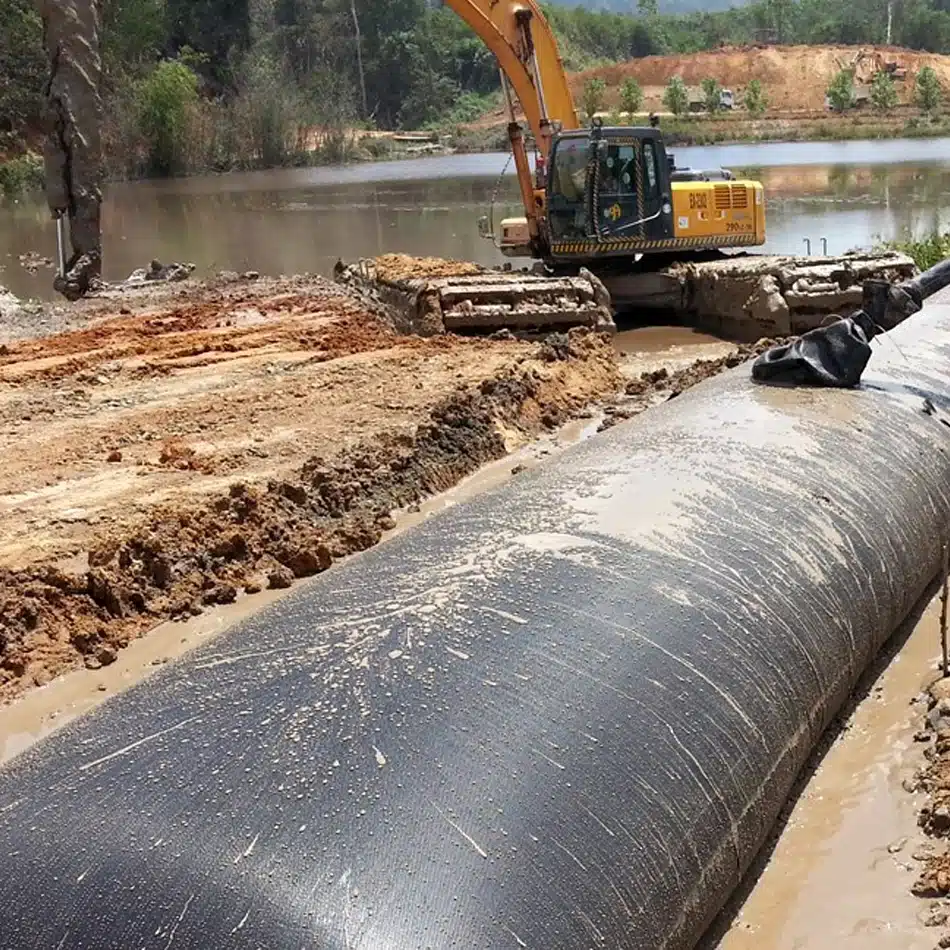
What quality control and documentation should I require?
Vague claims cost you later. Tie properties to methods. Keep traceability from roll to tube to row position.
Require fabric certificates for tensile, seam efficiency, AOS, permittivity, and UV retention. Record tube IDs, placement maps, fill cycles, polymer lots, and return-water tests. Close the job with an as-built pack.
Dive deeper
Factory CQC you should see
- Lot certificates: Fabric tensile, seam strength, AOS, permittivity, UV retention.
- Labeling: Tube ID, fabric lot, date, circumference, length, inlet type.
- Seam QA: Seam efficiency testing and visual standards.
- Packaging: UV-protected wraps and handling instructions.
Site CQA you should enforce
- Pad sign-off: Before placement.
- Layout map: Tube IDs and positions.
- Fill logs: Dates, times, height reached, rest periods.
- Polymer records: Dose setpoints, lot numbers, consumption, jar test photos.
- Water quality: Turbidity or TSS data at agreed intervals.
- Photos: Before/after each fill cycle, inlets, and discharge points.
Acceptance and close-out
Set pass/fail thresholds for return-water clarity and final solids content, if required. Ask for a closure memo with volumes handled, polymer used, and photos. This file protects you with auditors and clients and guides your next order.
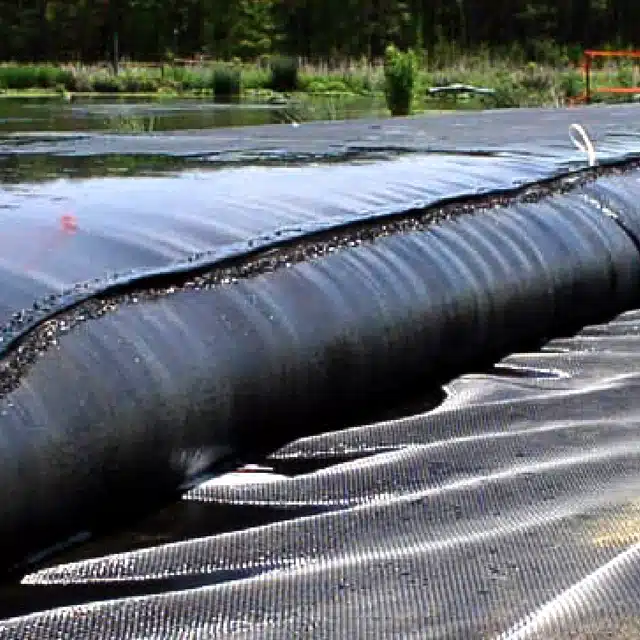
My opinion
From a manufacturer’s seat, the best results come when buyers treat geotubes as a system, not a single product. You order the tube, the underlayment, the polymer skid, and the fittings together. You run jar tests before mobilization. You size circumference to the pad, not to a brochure photo. These small steps save more money than chasing the lowest price per meter.
FAQ
Do I need polymer?
For sand-rich slurries, maybe not. For silt, clay, and organics, yes. Run jar tests to set dose.
How high can I fill?
Follow the tube filling chart. Many jobs target 60–85% of theoretical height per cycle, then rest and re-fill.
Can I stack tubes?
Yes, with bearing checks, row spacing, and only after lower tubes gain stiffness. Use keys or spacers to control rolling.
What fabric AOS should I pick?
Use gradation data and jar tests. Too small blinds the fabric. Too large loses fines. Most fine slurries fit 0.2–0.6 mm with polymer.
How do I handle return water?
Provide a sump and ditch. Sample turbidity or TSS. Add a polishing step if the permit requires it.
What about coastal erosion control?
Use heavier fabrics, scour aprons, and anchors. Expect wave and vandal loads. Follow a marine detail set, not only dewatering rules.
Conclusion
Treat geotubes as a system. Pick the right circumference and fabric, run jar tests, build a draining pad, and log every fill. You will move more slurry, return cleaner water, and deliver dense, stable solids with less equipment and fewer delays.

